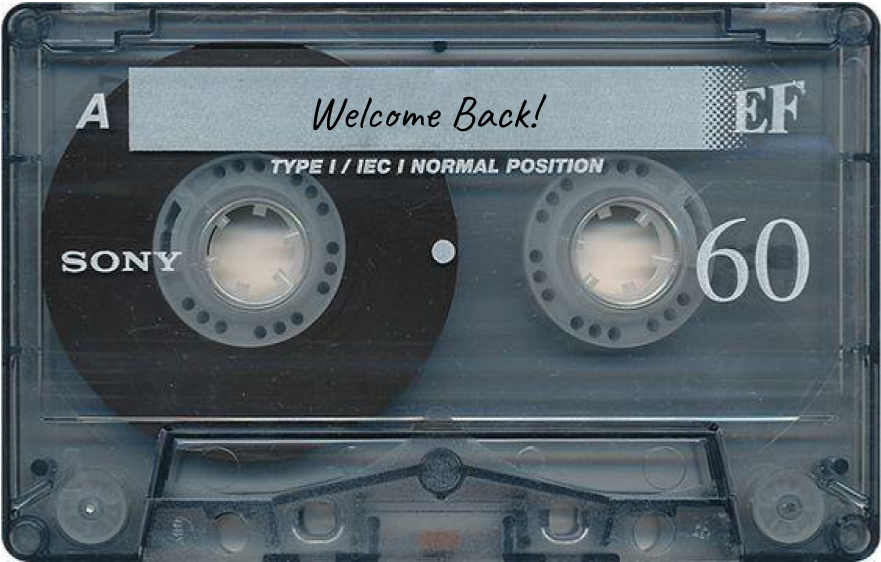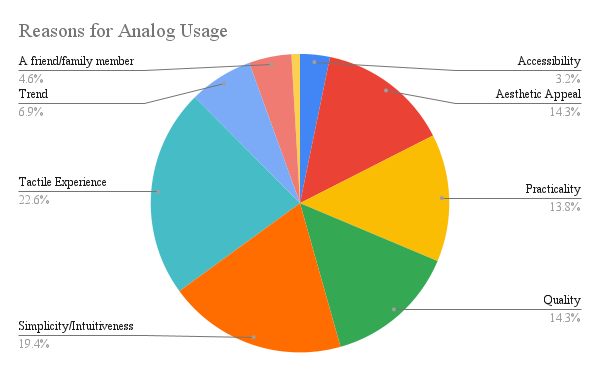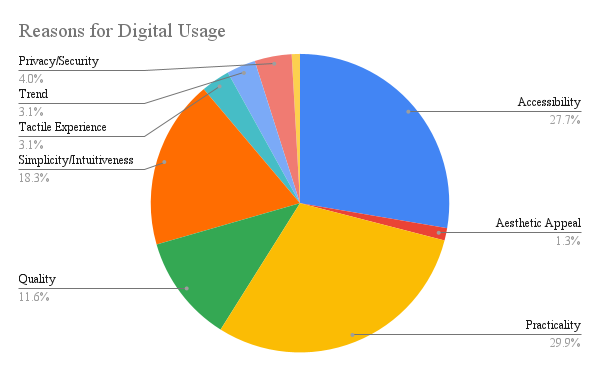
A growing number of young adults skeptical of the effects of the rapid proliferation of digital technology are beginning to turn towards analog tools, once seen as obsolete, as an alternative.
Generation Z, those born between 1996 and 2010, is often portrayed as unequivocal embracers of technology and the digital world. In many respects, this is a valid depiction. Being the first generation to come of age since the technology boom at the turn of the millennium, they were the first whose puberty was often accompanied by a phone in their pocket (Haidt 2024: 44).
Between generations, childhood went from being defined by embodied free-play and personal and synchronous connection, to one that is increasingly abstracted and sedentary. This kind of childhood requires a self-awareness that the developing brain is not yet equipped for (Haidt 2024: 50–58).
Now newly adults, Gen Z is suffering the consequences. Skyrocketing rates in mental illness have accompanied the transition to a digital world. Since 2010, U.S. undergraduates have experienced a 134% increase in anxiety and a 108% increase in rates of clinical depression (Haidt 2024: 26).
These statistics have understandably instigated a reevaluation of peoples’, specifically Gen Z’s, obsession with digital spaces. Where mainstream media has focused on instructing parents how to help their children with titles in The New York Times and NPR like “How to help young people limit screen time — and feel better about how they look” and “How to Wean a Teen Off Social Media” (Aubrey 2023; Pearson 2023), little attention has been paid to the growing unease amongst Gen Zers themselves, which is translating into a resurgence of analog tools (Pena 2022).
Forbes tech writer Blair Currie (2022) reports a reemergence of traditional chain bookstores, disposable cameras, live phone call support, vinyl records, CDs and walkmans, cassette tapes, and landlines all driven by Gen Z. The LOG OFF Movement, started by a group of 20 year old college students, encourages college students across the country to limit time on their cellphones, particularly social media (Pena 2022).
The Power of Nostalgia
Cultural theorist and artist Svetlana Boym described how “Outbreaks of nostalgia often follow revolutions” (Boym 2001: 9). Indeed this is true—and push-back against modern technology is not in any way new. However, unlike prominent examples of the past such as the 19th century Luddites, embittered English textile workers who opposed new machinery in mills, these “Neo-Luddites” have none to little prior experience in the world they yearn for. Rather, the growing opposition derives not from memory but from a sense of fabricated nostalgia, informed by media and older family members.
Anthropologists of media Mani Mehrvarz and Maryam Muliaee (2017) argue the stress of constant productivity and efficiency is emulated in digital technology, which lacks human input, and thus human error. Nostalgia then manifests itself in a desire for indexicality, with analog mediums such as cassette tapes and film whose ‘flaws’ seem closer to the real, tangible world (178). Journalist David Sax argues “analog experiences can provide us with the kind of real-world pleasures and rewards digital ones cannot” (Sax 2016: XVII).
Guesses have been made as to why exactly Gen Z is increasingly turning towards analog tools, although there has yet to be any serious research done on youth analog usage to quantify it. As such, I conducted a survey of Hamilton College students on their usage of digital technology versus analog tools.
Why Youth Opt for Analog
“I use analog technology to return to mediums of the past and for memory purposes. I want to experience using analog technology in a creative way and have a specific memory of it; I feel with digital technology I do not have this as often in a creative space.”
–anonymous Hamilton student
Nearly half of students reported they preferred analog things over digital for leisure purposes. Such proportions of young analog users challenge previous conceptions about the future of technology. As David Sax writes, “The revenge of analog not only questions our assumptions about digital’s inevitability, but the very certainty at the heart of the digital economy” (Sax 2016: XVI)


When asked about the appeal of analog tools versus digital ones, students who preferred analog tools reported an aesthetic draw and the tactile experience inherent with analog tools to be some of the main factors. Students’ recognized importance of tactility is not surprising; touch is the first sense one develops and grounded interaction with both people and objects has been shown to have a calming effect associated with stress reduction (Eckstein et al. 2020). Forbes writer Blair Currie reports, “Touch helps restore the visceral experiences of life that have been largely lost…in mobile phones” (Currie 2022).
But Digital is Everywhere…
“Society today is based off of [sic] digital technology. We use websites for homework, we turn things in digitally, we read articles online. If those weren’t the case, I would probably be less likely to use so much digital technology.”
–anonymous Hamilton student
Of the students surveyed, only a quarter reported that they used analog tools more frequently than digital ones for productivity tasks. Students who preferred digital technology cited accessibility and practicality as the two most important reasons.
Students expressed they want to use analog tools more frequently but struggle to do so. 60% of surveyed students reported buying and owning analog tools they did not use frequently.
Digital technology addiction and the college’s and greater world’s reliance on digital tools makes it challenging for students to use solely analog. Indeed, U.S. schools, especially colleges, exceedingly require digital technology to do work and turn in assignments, which can have negative effects on students such as poor memory retention and higher rates of distraction (Morehead et al. 2019). One Hamilton student wrote they find “taking notes in class easiest to do in a notebook” but since their assignments have to be done and submitted online, they “end up using a computer more than [I do] pen and paper.” Another said they are trying to “phase out of digital technology and into analog” because they are “not super fond of the idea of being connected to everyone who is online at all times.” Though they noted, “digital technology is much more convenient which makes it difficult to let go of”.
There were no apparent differences demographically between analog and digital usage, aside from a slight increase in analog usage in students who were pursuing a major in the humanities.
Looking Forward
A significant portion of Generation Z has made their disillusion in digital technology clear. Having grown up in front of a screen and realizing their dissatisfaction, many now crave visceral and tangible experiences which seem to align with the “real world.” However, it is implausible for individuals to fully reject tech when the world is so reliant on digital technology. In order to return to the embodied and synchronous state many Gen Z-ers desire, widespread changes are needed to reduce the reliance on digital technology. While this may seem impossible, as Gen Z continues to embrace analog tools and movements like LOG OFF become more widespread, analog’s full reemergence seems less distant.
Bibliography
Boym, Svetlana. 2001. The Future of Nostalgia. New York: Basic Books.
Currie, Blair. 2022. “Gen Z Finds Stability By Embracing The Past.” Forbes. Retrieved April 26, 2024 (https://www.forbes.com/sites/forbestechcouncil/2022/05/24/gen-z-finds-stability-by-embracing-the-past/?sh=7038222933c6)
Doucleff, Michaeleen. 2023. “Teens say social media is stressing them out. Here’s how to help them.” NPR. Retrieved May 5, 2024 (https://www.npr.org/sections/health-shots/2023/05/17/1176452284/teens-social-media-phone-habit)
Eckstein, Monika., Ilshat Mamaev, Beate Ditzen, & Uta Sailer. 2020. “Calming Effects of Touch in Human, Animal, and Robotic Interaction-Scientific State-of-the-Art and Technical Advances.” Frontiers in Psychiatry 11(555058) Retrieved May 5, 2024 (https://doi.org/10.3389/fpsyt.2020.555058)
Haidt, Jonathon. 2024. The Anxious Generation: How the Great Rewiring of Childhood Is Causing an Epidemic of Mental Illness. New York City, NY: Penguin Random House.
Mehrvarz, Mani and Maryam Muliaee. 2017. “Media-as-Things: A Nonhistorical
Nostalgia Through Failure.” Pp. 167-187 in Nostalgic Generations and Media: Perception of Time and Available Meaning, edited by R. Lizardi. Annapolis, MD: Lexington Books.
Morehead, Kayla, John Dunlosky, Katherine Rawson, Rachael Blasiman, & R. Benjamin Hollis. 2019. “Note-taking habits of 21st Century college students: implications for student learning, memory, and achievement.” Memory 27(6):807–819. Retrieved May 6, 2024 (https://doi.org/10.1080/09658211.2019.1569694)
Pearson, Catherine. 2023. “How to Wean a Teen Off Social Media.” The New York Times. Retrieved May 5, 2024 (https://www.nytimes.com/2023/06/29/well/family/social-media-usage-teens.html)
Pena, Alex. 2022. “Gen Z has lived their entire lives online. Some are fed up..” CBS NEWS. Retrieved April 26, 2024 (https://www.cbsnews.com/news/gen-z-internet-social-media/)
Sax, David. 2016. The Revenge of Analog: Real Things and Why They Matter. New York City, NY: PublicAffairs.